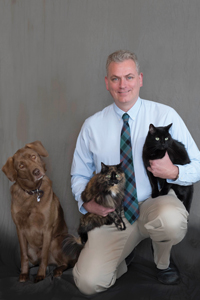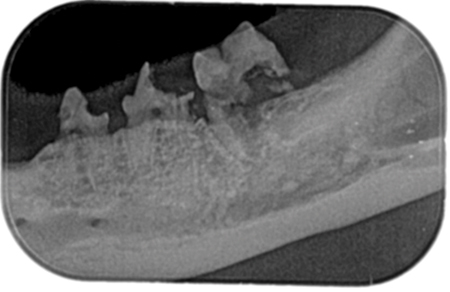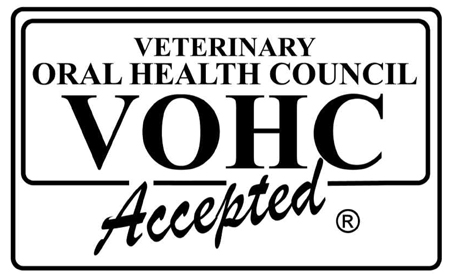 We trust our dentists to tell us the best oral health care routines, and based on our dentists’ recommendations, we teach our children about oral health care. Our pets do not have any oral care capability and rely on us to keep their mouths clean and healthy. Dentists are often asked by their patients about oral health care for pets. The answer starts with advising them to talk to their veterinarian.
We trust our dentists to tell us the best oral health care routines, and based on our dentists’ recommendations, we teach our children about oral health care. Our pets do not have any oral care capability and rely on us to keep their mouths clean and healthy. Dentists are often asked by their patients about oral health care for pets. The answer starts with advising them to talk to their veterinarian.
Sadly, oral care for pets is often not recognized by owners until signs of oral disease such as halitosis, dysphagia, inappetence, bleeding gums, or oral pain and swelling are present. It doesn’t have to be this way. Regular oral assessment by a veterinarian and developing a dental care routine for our pets can help keep our pets’ mouths healthy and minimize dental pathology.
Cats and dogs have oral structures analogous to humans, but the size, shape and number of teeth evolved to fit their evolutionary niches. Cats (Felis catus) are carnivores with short jaws and pointed teeth designed for biting, holding, and tearing prey. Their dental formula is I 6/6, C 2/2, P 6/4, M 2/2 = 30. Dogs (Canis familiaris) are omnivores with teeth designed for biting, tearing, crushing, and grooming. Their species exhibits a large degree of morphologic variation with the same body type used for breeds ranging in size from a 2 kg Chihuahua to a 100 kg English Mastiff, and with facial conformation ranging from short-faced brachycephalic (Shih Tzu and Pekingese) to long-faced dolichocephalic (Greyhounds and Collies). The canine dental formula is I 6/6, I 2/2, P 8/8, M 4/6 = 42, with tooth size, location and orientation within the mouth varying depending on size and breed. Pets with body size and facial conformation toward the extremes are at higher risk for dental problems.
An oral exam is a standard part of every pet’s physical examination starting from their first visit. Tooth development and transition from juvenile to adult teeth are noted at each puppy/kitten exam. Permanent teeth erupt at approximately four months of age in both cats and dogs. A thorough oral exam should be completed when the pet is under anesthesia for spaying or neutering, which usually occurs between six and twelve months of age. Any “missing” teeth should be radiographed at that time to determine if teeth of interest are truly not present or are unerupted. Results of dental assessment and relevant recommendations need to be communicated in writing to owners. Veterinarians can examine pets, identify abnormalities, and provide an oral home preventative care plan, as well as discuss veterinary dentistry to treat oral pathology.
A veterinarian can identify oral abnormalities such as malocclusions (brachygnathism, wry mouth, crossbite), broken, displaced or missing teeth, dental crowding, rotated teeth, supernumerary teeth, periodontal disease and intraoral masses, among others. Certain breeds are at higher risk of dental disease due to body size and/or conformational abnormalities. Persian cats and Shih Tzu dogs both suffer from brachycephaly, a condition where the bones of the skull are shortened, giving their faces a “pushed in look,” misaligned jaw and crowded teeth. However, not all pathology can be identified by visual inspection alone. As with people, a complete oral exam requires full-mouth dental radiographs and thorough probing of the crowns and gingival sulci of all teeth. This procedure is called as COHAT (Comprehensive Oral Health Assessment and Treatment). A COHAT cannot be done safely with an awake or mildly sedated patient. Veterinary patients need to be placed under general anesthesia and monitored by trained registered veterinary technicians and veterinarians to safely examine the mouth, obtain diagnostic dental radiographs, and perform a thorough cleaning and polishing of all tooth surfaces. Afterwards, owners are provided with a case summary and treatment plan to address the pathology.
Usually, a veterinarian will recommend surgical extraction of diseased teeth. This is due to several reasons, including the severity of the disease (see Figs. 1A-D) and limited aftercare. Pets return to their normal routine as soon as possible after a procedure, with no regard for the time, money and effort that was put into their mouth. To promote efficient healing under less-than-ideal post-op circumstances, all extraction sites are sutured closed utilizing gingival and mucoperiosteal flaps. Owners are tasked with some basic post-op home care; feeding a soft food diet, removing chew toys from the environment, and keeping the patient confined, indoors for cats and outside on-leash only for dogs. A follow-up exam is done in 10-14 days, and usually, the mouth is healed well enough by that time to allow the patient to resume normal diet, activity, and routine. It is at this time that owners are encouraged to initiate a daily oral home care plan for their pets.
Fig. 1A

Fig. 1B

Fig. 1C

Fig. 1D

Although most dental pathology is treated by extraction of the diseased teeth, more advanced options such as root canal, crown restoration, periodontal surgery, invasive oral tumor resection and even braces are available. Most of these require a veterinary dental specialist certified by the American Veterinary Dental College or European Veterinary Dental College with the skills, knowledge, and equipment to execute these complex procedures successfully. A list of board-certified veterinary dentists can be found at https://www.avdc-dms.org/dms/list/diplomates-map.cfm. It is important to remember that cats and dogs do not need teeth and can eat, groom, and socialize. What they do need is a mouth free of pain and disease. They will do just fine, even if they ARE toothless.
Tooth brushing is the most effective form of oral home care for pets. As with humans, oral home care is good for prevention and almost useless for treating dental disease. So, it is important to start when a pet is young and impressionable. Getting a pet accustomed to being held and having a toothbrush in its mouth takes time, patience, and positive reinforcement. Caressing or tickling a puppy’s or kitten’s lips, gingerly opening its mouth, and gently touching its gums and teeth from “day one” helps a pet learn that these manipulations are normal. Positive reinforcement with treats and praise is essential to reinforce acceptance of this activity. Finding the triggers that make a pet happy; a belly rub, pat on the head, soft words of approval, or a tasty treat can all effectively promote good behaviour. Make it fun! Puppies and kittens thrive on positive attention. Remember, pets who have not had oral touching included in their puppy/kitten training are much less likely to allow toothbrushing later in life!
Once a pet is used to having its head and mouth manipulated, a toothbrush can be introduced. A pet or child’s toothbrush works well. Start slow, gently touching the bristles to the pet’s teeth and gums for a few seconds, then providing positive reinforcement. Over time, gradually start brushing the teeth in a small, circular motion along the gumline. Use of a pet toothpaste can help but remember that the fancy plaque-fighting, enamel-strengthening chemicals present in our toothpastes are generally harmful if swallowed. As cats and dogs cannot be trained to “rinse and spit”, pet toothpastes are much more basic, consisting of a mild abrasive agent, a flavoring and a paste or gel base. Choose a toothpaste that has a flavor that pets enjoy. It will help reinforce that toothbrushing is a fun, positive experience. If a pet chews on the toothbrush, this behaviour can be used to assist in cleaning of the molars. Dental pet food diets help keep occlusal surfaces of chewing teeth clean but are ineffective for the remainder of the teeth. Also, some pets eat very quickly and don’t chew their food. The larger diameter of dental kibble formulations can cause some pets to choke, so it is important to transition pets onto a dental diet slowly and observe them eating. Obvious crunching sounds should be audible if the diet is being chewed appropriately. Avoid natural products such as bones, hooves, and antlers and hard plastic or nylon pet toys. These items are hard enough to fracture teeth. Never attempt to brush an animal’s teeth if they are showing any signs of disease! If concerned, contact a veterinarian.
There are a plethora of oral health foods, treats, pastes, gels, and supplements marketed for pets by a myriad of companies, with new products and companies entering the market every year. The efficacy of these products is highly variable. A veterinarian can provide a list of products that are safe for use in your pet’s mouth. In addition to consulting with a veterinarian, the Veterinary Oral Health Council (VOHC) website vohc.org is a good resource. The VOHC is an independent organization that reviews data from product trials and awards the VOHC Seal of Acceptance (see Fig. 2) to products that provide data that meet VOHC standards. Their website provides a list of approved oral health products for both dogs and cats.
Fig. 2

In pets, as in people, oral care needs to start early in life, become part of the daily routine and includes a regular examination by an oral health professional. Dentists and the care they provide are essential for lifelong oral health in people. Similarly, oral care provided by veterinarians is essential to the oral health of pets. As pets have a shorter lifespan than we do, significant acquired pathology can develop in pets as young as three years of age. In addition, some pets are born with significant congenital abnormalities, which increase their risk for oral pathology.
Oral Health welcomes this original article.
About the Author
 Johnathan McTaggart, is pictured above with his dog, Dave and his cats, Jasmine and Knight. His official title is “Veterinarian, Owner and Chief Optimist” at his two practices, Borderview Veterinary Hospital in Fort Erie, and Pelham Animal Hospital in Fonthill, Ont. Dr McTaggart is a life-long animal lover. He earned his Doctor of Veterinary Medicine from the College of Veterinarians of Ontario, University of Guelph. He has been practicing for over 20 years, with a keen professional interest in veterinary dentistry and client education. He is a member of the College of Veterinarians of Ontario, the Ontario Veterinary Medical Association, the Canadian Veterinary Medical Association, the American Animal Hospital Association, and the Foundation for Veterinary Dentistry.
Johnathan McTaggart, is pictured above with his dog, Dave and his cats, Jasmine and Knight. His official title is “Veterinarian, Owner and Chief Optimist” at his two practices, Borderview Veterinary Hospital in Fort Erie, and Pelham Animal Hospital in Fonthill, Ont. Dr McTaggart is a life-long animal lover. He earned his Doctor of Veterinary Medicine from the College of Veterinarians of Ontario, University of Guelph. He has been practicing for over 20 years, with a keen professional interest in veterinary dentistry and client education. He is a member of the College of Veterinarians of Ontario, the Ontario Veterinary Medical Association, the Canadian Veterinary Medical Association, the American Animal Hospital Association, and the Foundation for Veterinary Dentistry.












